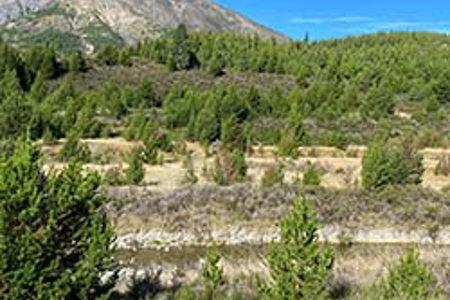
Tangata whenua guardian group, Tunaiti Kaitiaki Rōpū and Waikato Regional Council are partnering on a project to prevent the further spread of wilding pines at Hauturu Motu/Clark Island, off the coast of Whangamatā.
Hauturu is one of four islands that comprise Tunaiti Motu. Tunaiti Kaitiaki Rōpū is working towards the upkeep of the islands as wildlife sanctuaries, protecting its native flora, fauna and archaeological sites.
Kaitiaki spokesperson, Errol Gilbert, says the removal of the pines and ongoing wilding pine management is part of Tunaiti Kaitiaki Rōpū’s efforts to restore the ngahere and native biodiversity of the island.
“We need to treat the natural environment with respect and restore, improve and preserve the biodiversity values, to honour those who were before us and for future generations,” he says.
Kororā (little blue penguin), tītī (mutton bird), at least three species of skink and gecko, and many species of passerine birds call the Tunaiti Motu home.
But once abundant in native wildlife, including tuatara, the islands are today rated Category 1 priority biodiversity sites, which means they are critically endangered and naturally uncommon ecosystems that support threatened and at-risk flora and fauna.
Hauturu, the largest of the islands at seven hectares, was likely cleared of vegetation prior to the early 1940s and has regenerating coastal cliff and coastal forest ecosystems.
Waikato Regional Council Biodiversity Sites Lead, Jacob Dexter, says the wilding pines threaten that regeneration because of their ability to invade and impact upon indigenous ecosystems and landscapes.
“Wilding pines are a tree in the wrong place that can overwhelm landscapes, outcompeting native plants which provide food, habitat and other resources that native flora and fauna need to survive,” he says.
“Production forestry may play an important role in the economy of the Waikato region, but wind-dispersed conifer seed can result in unplanned and unmanaged wilding trees that grow much faster and quickly outcompete native forest species.
“Eradicating wilding pines from Hauturu is a high-priority step towards restoring the island’s ecological and cultural landscape and recreational values, not only for mana whenua but for the Whangamatā community and visitors alike.”
He adds that some of trees are quite large and in rugged and precarious terrain, so removal has been a logistical challenge.
“The larger trees visible from Whangamatā beach were cut down, but the smaller, less accessible trees located on the northern cliffs required abseiling by the contractor to drill and fill them with a non-residual poison. After the initial knockdown, we’ll do a further two years of seedling and sapling removal if needed.”









